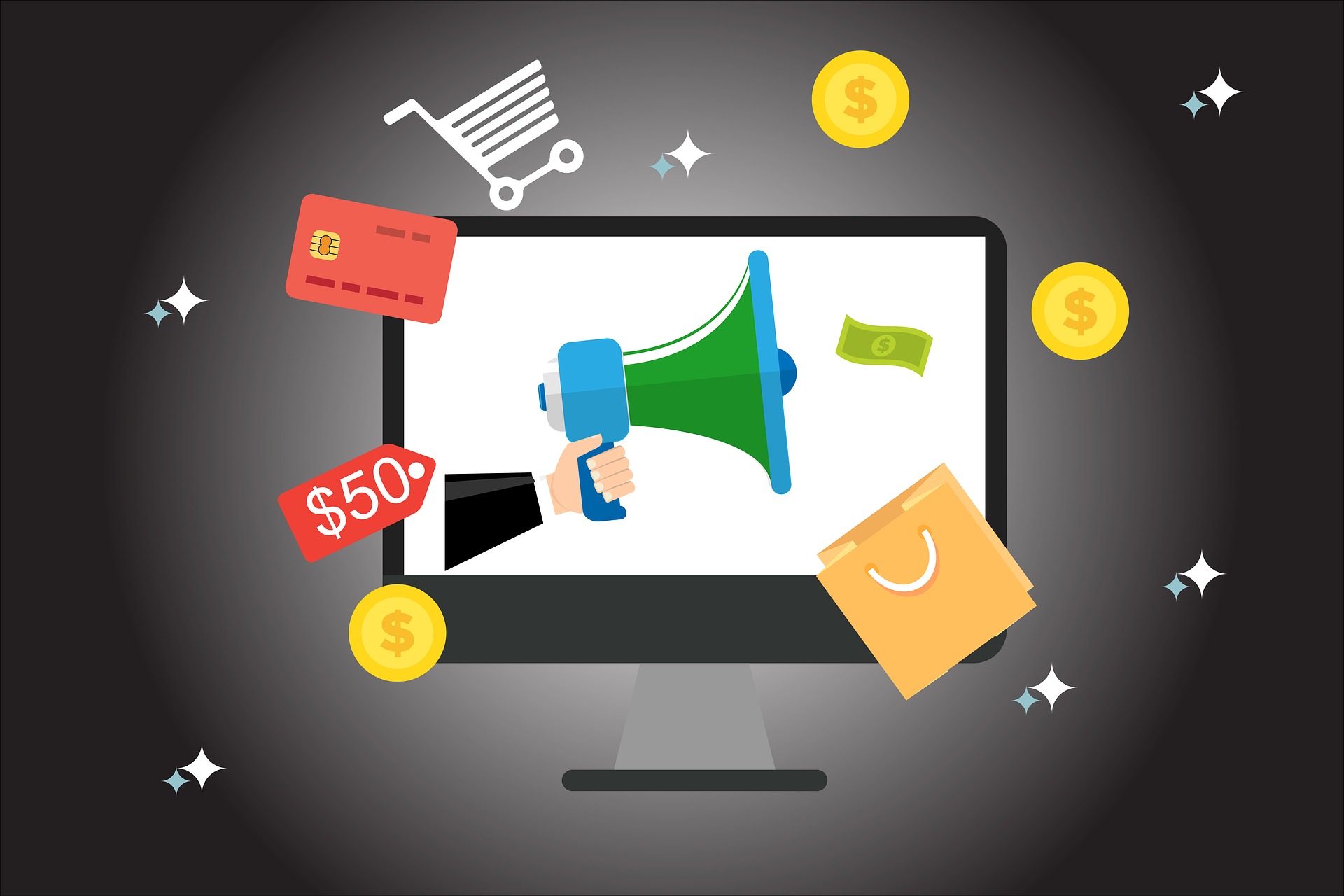Your e-commerce site needs visitors before converting them to customers. It is nothing if there is no people enter despite your site is beautiful and has great products waiting to sell. To drive traffic to your site, you can try these 6 channels of online marketing:
E-Commerce Marketing #1: Pay-per-click (PPC)
Pay-per-click (PPC) is where you put your advertisement and every time someone clicks on your advertisement, you will be charged.
The advantage of PPC is your ads appear at the very moment people searching about it.
There are several types of PPC advertisements:
- Paid ads
- Display ads
- Shopping campaigns
Data from Wordstream suggested that the average conversion rate across all industries is 0.77% with Display ads, compared to 3.75% for Search ads.
You can choose that suit your e-commerce business. Each type of PPC advertising can play an important, yet different role in your overall digital marketing strategy.
Apart from the most famous one; Google, there are different PPC ad networks, such as Bing Ads and Amazon Advertising.
E-Commerce Marketing #2: Search Engine Optimization (SEO)
Good news: 70-80% of Google users are only focusing on organic search results.
Bad news: You have to spend 3-6 months for your SEO to success and appear on the first page. Meaning that if you urgent to generate leads, this might not be your first priority.
But don’t worry, you can continuously setup SEO over time.
There are many useful resources to optimize your site’s SEO and track your progression over time, like SEMrush and MOZ.
E-Commerce Marketing #3: Content Marketing
Content marketing is marketing involving the creation and distribution of online material that does not directly promote a brand or selling but indirectly stimulates interest to its products or services.
Content marketing is the best means to distribute your product to an audience through blog posts, infographics and videos in your e-commerce platform. Then you get the possibility to convert them to customers.
This is called inbound marketing, where e-commerce shoppers come to you and it costs significantly less than outbound efforts, where you go out and find the e-commerce shoppers for yourself but it takes more time to create the contents.
E-Commerce Marketing #4: Influencer Marketing
Influencer marketing is the process of identifying, researching, engaging and supporting the people who create high-impact conversations with your customers.
Everybody has own idol or guru that they trust and become their influencer. A brand will align with that influencer who has a large following and credibility within a certain niche to make certain action, in the business sense, buy a product.
The brand and the influencer will together create content that’s intended to build brand awareness and drive sales.
Since the influencer already has the attention and trust of their following, this paid product support feel less ‘advertisement’ than standard advertisements. They’re a worthy marketing tool especially to use across social media, YouTube, and well-known blogs.
E-Commerce Marketing #5: Social Media Marketing
Social media users now are 2.27 billion and rapidly developing the online world that change the way people interact with each other and business brands online.
Popular social networks like Facebook, Twitter, and Instagram know the business opportunity and introduce new features to help brands effectively reach their potential customers.
Each social network has its own nature and design. You have to suit your content with social media so that the audience happy and excited to engage with your brand. Each social media also offers different ad types. You can choose wisely to suit your advertising strategy.
Social media are constantly introducing new ways to entice brands, and more importantly, advertisers to their networks via social commerce.
Social commerce already flourished before e-commerce grew to what we see today. The social network’s speedy growth is driven by mobile adoption, where 90 per cent of the online population accesses the internet using smartphones.
Brands have directly recognised social commerce as alternative sales channels. Like Facebook, Instagram and Pinterest have also developed their own shopping features on their platforms. This simplifies the path to purchase, and subsequently, increases conversion rates.
Deb Liu, vice president of Facebook Marketplace said the best way to get feedback from consumers is by having a direct conversation. Brands will miss out if they don’t have a social media presence.
E-Commerce Marketing #6: Email Marketing
Email marketing is seen as the basic element to a 21st-century business especially to engage with user and customer that had already interacted with your brand. If you haven’t started using email marketing as a channel for your marketing, this is the time to do so! These are the fortes of email marketing that you must know:
- More than 4 billion accounts in the world and 25% of it is a business account
- High channel for ROI
- Ease to track and measure data
- Tailor-made and more personal
Every channel has its own game. So does email marketing! It needs to look into deeper in every steps and decision that you will take.
As if you have entered your audience’s house by sending an email, surely you need to ask for permission to enter the house, know the reasons why you are there, talks about good things and make the host happy.
There are various ways to attain an email address. You need to do something in order to attain them. You can opt for a free e-book, subscribe to your blog, contest and many more.
Segmentation is how you sort your subscriber to groups such as their interest, district, gender and age. This will make it easier for you to send a newsletter to a specific group that you want to engage.
For an illustration, a newsletter about a hijab obviously will be sent to women subscribers only. If you send at random without targeting, they might unsubscribe thus leaving you empty-handed.
For a marketer or a businessman, you tend to be busy and forget something. With email marketing, you can use automation and autoresponder in advance to send newsletters to your subscribers. Don’t be shocked to know that some companies had scheduled their newsletters a year ahead!
Autoresponder is when you had set the date and time in which a newsletter will be automatically sent to your subscribers. Let’s say on 1st January at 12.15 am, a newsletter will greet your customers a glorious Happy New Year is sending without you lifting any fingers at that time.
Automation is you set the workflow for your subscribers. For example, after Mary subscribed to your website, she will receive a welcoming message, instantly. You will need to create a complete workflow for your subscribers.




Leave a Reply